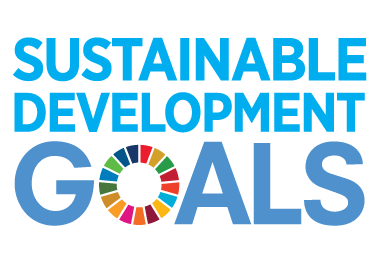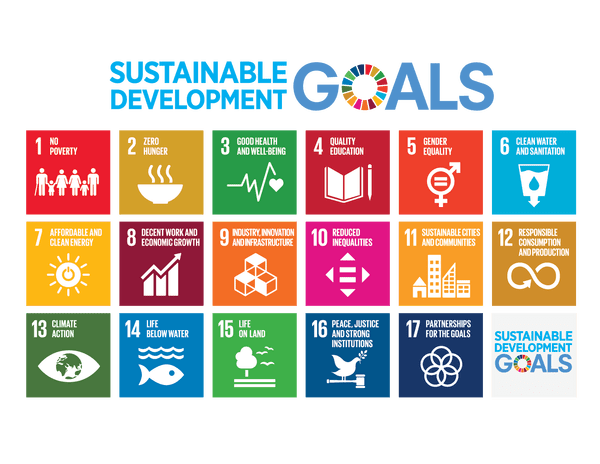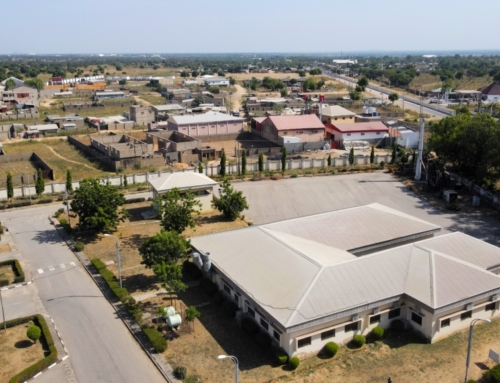You must have heard or read about them. Warming oceans. Rising ocean and sea levels. Diminishing amounts of snow and ice. And back home in many African countries, vanishing streams. Disappearance of trees and forests. Simply put, our environment is on the verge of a major catastrophe. And we must work hard to salvage it, protect it, and preserve it for future generations. This is the clarion call of the United Nations (UN) Sustainable Development Goal 13 for all of us to “take urgent action to combat climate change and its impacts.” The global target of SDG 13 is to “improve education, awareness-raising and human and institutional capacity on climate change mitigation, adaptation, impact reduction and early warning.”
If we are talking about preserving the environment for the future, then youths must be at the center of this work. Today’s youth are tomorrow’s leaders. It is upon the leaders all over the world to guide them and provide them with the knowledge to help them make knowledgeable decisions regarding the environment in the future.
Increasing environmental awareness among youths is a topic that can’t be ignored. Youth environmental education and awareness is at the foundation of preventing environmental problems. The youth are the most productive in the world and empowering them, especially in Africa with environmental education is paramount. The youth must become experts in environmental education and also develop a deep connection with the environment if the world is going to become a better place environment-wise.
The UN environmental program came up with the sustainable development goals which are pertinent for Africa if the continent must strive to the health problems facing the African society. Through these two programs, the UN intends to eradicate issues like lack of clean water, hunger, affordable and clean sources of energy, responsible consumption and production among many other things. Most of these problems would only be solved by environmental education. According to the UN, lack of clean water for example leads to health problems reducing productivity among the people and digging them deeper into poverty.
By educating the youth, the world is preparing for future challenges. At the beginning of the year 2012, the world’s population surpassed the 7 billion mark, and people under the age of 30 accounted for more than half the number. According to the same survey, 89.7% of these people lived in developing countries especially in the Middle East and Africa. This population also happens to be the most productive, and if properly harnessed, they can bring a lot of change and growth in these countries.
Environmental education (EE) among the youth all over the world help students transcends their learning beyond the classrooms. EE offers the youth the chance to experience learning out of the classroom enabling them to make connections with the environment and also apply what they learn in the classroom in the real world.
In Kenya for example, the forest cover in 2017 was so much destroyed, and this had adverse effects on the environment. Their government had to shut down cutting of trees all over the country and instead started encouraging the people to plant more trees. The youth were encouraged to make sure they planted at least one tree in a year and take care of the tree to maturity. This happened, and a lot of young people came out in numbers for tree planting exercises. If the project was successful, at the end of the year 2019, the government in Kenya estimated that they would recover more than 60% of the lost forest cover.
In Nigeria, the environment suffers on every side. We all know Nigeria is rich in oil and this doesn’t do any good to the country. Oil spills especially to the people who live in the Niger Delta are a persistent problem. The oil is harmful to aquatic life and also poisons their drinking and farming water. The situation is so bad such that oil is found as far as five meters from the surface. The youth from time to time come together and demonstrate trying to make their government show concern as there is little they can do about the spills. Deforestation is another problem in Nigeria combined with water pollution. People are dumping industrial waste and chemicals in water poisoning the water which has led to deficiency in clean drinking water. The youth are encouraged to help people understand the dangers of dumping waste in water and also plant trees to try and curb deforestation.
Benefits of Environmental Education among the Youth
- Encourages the youth to be active
Breaking the indoor habit is one of the biggest challenges in developed countries. American children and the youth spend 27% of their time watching television and only 1% of their time is spent outdoors. This has led to lifestyle diseases and obesity. Environmental education encourages these children to be active by planting trees, learning to appreciate and enjoy time in outdoor environments hiking and camping and many others.
In the developing countries, the young people spend most of their time outdoor doing chores or engaging in different activities either with their parents or peers. That is one reason the UN was concerned for the girl child. The average girl child in the African setting for example spends 54 minutes fetching water while the men spend six minutes. Only 2% of the youth in Africa and the developing countries spend their time indoors.
- Improving overall health
Environmental education gets the students out of the classroom and encourages them to be active in a fun way. It also helps address common health issues in children like obesity, depression and attention deficiency disorder.
- Cultivating leadership qualities among the youth
Cooperative learning and critical thinking, as well as teamwork, are enhanced by environmental education. When the youth learn the importance of doing things together, their leadership skills improve. Through this, we create a batch of better and well-equipped leaders of tomorrow.
- Enhances critical thinking
The 21st century is so demanding, and a lot is needed from the youth. The youth need to be able to question, define problems, investigate, reason, interpret, define issues, develop conclusions and come up with solutions to these problems. The youth who are exposed to environmental education
- Saves money
When the youth take action to improve the environmental conditions of their society, they cut costs in water and electricity, waste management and more. It also saves them a trip to the doctor which can be an expensive ordeal in the developing countries. With a clean environment, waterborne diseases such as cholera and typhoid are rare.
The society as a whole requires environmental education for sustained development all over the world.
Lack of environmental educational in Africa will be a precursor to a myriad of problems for the continent. Issues like global warming are exacerbated by lack of environmental awareness. Water bodies today are getting depleted at an alarming rate. If society both in the developing world and the developed countries is well aware of the adverse effects caused by environmental pollution, some of these problems would be non-existent.
The developed countries have taken steps to take care of the environment for example by banning the use of polythene papers. These are non-biodegradable, and they cause a lot of harm to the environment. The developing countries like Kenya are following the example set by the world by banning these plastic and polythene papers in a bid to take care of the environment. But more developing countries need to become aware and toe the line.
Water bodies are drying up as a result of the lack of forest cover and global warming. Drought is one of the other adverse effects of the lack of environmental awareness. People cut trees and dump non-biodegradable materials in the environment without worry. If these people were taught especially the youth the importance of a clean and pollutant-free environment, they would help spread the education to their elders, especially in the developing countries.
As much as environmental education is important, it is also important for the governments to develop mechanisms to help the youth apply the information they have. Empowering the youth to help collect garbage, for example, goes a long way. The youth can pick up the garbage and dump it in the appropriate places for recycling or biodegrading.
There is a part of the youth in developing countries who are recycling waste plastic products to make decorations instead of dumping them. Others are using waste to make fertilizer and others to make energy. These are small initiatives and programs that need to be encouraged among the youth.
Environmental education among the youth is paramount to the growth of the society at large. With the youth being the most productive and having the highest percentage of the population, they can do wonders. If developing countries want to empower the youth and develop future leaders with a sense of touch and connection with the environment, they have to insist on environmental education. Working with its local and global partners with the youths playing a central role, HEDOF will continue to strive to rally all sectors of the sectors of society to act now—it is in the interests of everyone.
As SDG says, this is doable. Taking climate action now makes good economic sense. The more we delay, the more we pay. We can promote economic growth, eradicate extreme poverty, and improve people’s health and well-being by acting today.







